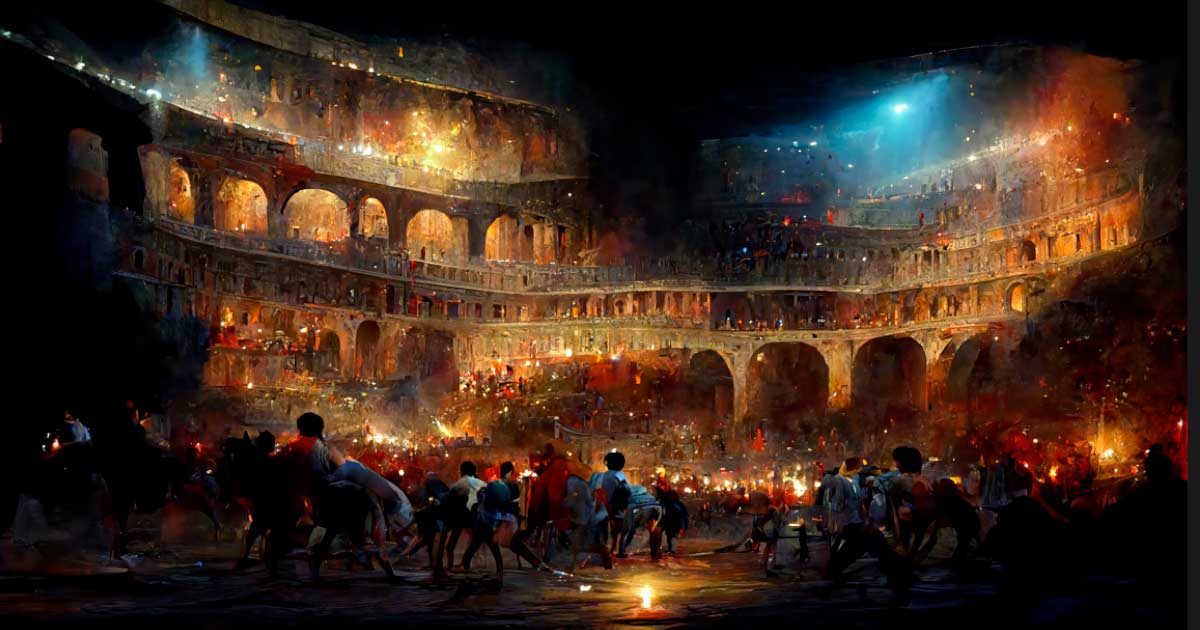Romans Snacked on Nuts and Melons While Enjoying Colosseum Bloodbath
Over the last year archaeologists excavating the Colosseum in Rome have unearthed animal bones and coins. Now, they’ve discovered “snacks” that were consumed by the bloodthirsty spectators.
Dating back to 69 AD the Colosseum, or Flavian Amphitheater, of Rome was founded when Emperor Vespasian restored the city after the Civil War. This 6-acre display of Roman engineering served as a centre of entertainment in the heart of the city between the Esquiline, Palatine and Caelian Hills.
According to a research article on Engineering Rome at 48 meters (157.48 ft) high it represents the “tallest ruin in Rome.” Over the last year a team of archaeologists have been draining the Colosseum. Now, according to a Reuters press release, their inventory of discoveries includes over 50 bronze coins dating to the late Roman period and a rare silver coin from 170-171 AD celebrating 10 years of emperor Marcus Aurelius’ rule.
Besides these valuable coins the excavators have recovered the fragmentary bones of the bears and big cats that fought in gladiatorial games. But now, Dr. Jo Ball from the University of Liverpool, Archaeology, Classics and Egyptology Department, has Tweeted saying “traces of olives and nuts, and the seeds from figs, grapes and melons” represent discards from spectators' snacks.
- The Flavian Amphitheater that Bought Emperor Vespasian’s Popularity
- Why Was Emperor Domitian Hated by the Elite but Loved by the People?
A selection of fruit seeds, stones, & pits recovered from the drainage system of the Colosseum in #Rome, remains of the snacks eaten by #Roman spectators watching the games in the arena up to 1900 years ago #RomanArchaeology pic.twitter.com/qrSSRQUIYB
— Dr Jo Ball (@DrJEBall) July 2, 2022
Their Nuts and Melons Are Our Popcorn and Beer
The Colosseum could hold an estimated 50,000 to 80,000 spectators and it was used for reenactments of famous battles and Roman mythology, but also animal hunts and mortal combat where gladiators and competitors fought to the death, for a chance of freedom.
In a statement, Alfonsina Russo, Director of the Colosseum Archaeological Park, said the discovery of the snacks “deepens the understanding of the experience and habits of those who came to this place during the long days dedicated to the performances." In other words, an event in the Colosseum without “olives, nuts, figs, grapes and melons” would be akin to a family movie without popcorn or a football game without hotdogs and beer.
- Gladiators: Ancient Romans Loved Their Deadly Games
- The Gladiators Priscus and Verus: Equal they Fought, Equal they Yielded
Dietary Differences, Then and Now
You might have noticed the one big difference between the snacks of ancient Roman sports fans and those of modern spectators. The Roman snacks “olives, nuts, figs, grapes and melons” help one avoid ill health, whereas modern snacks assure one will eventually use their medical insurance. A 2021 BBC article explains that grains, legumes, vegetables, eggs and cheeses were the base of the Roman diet, with fruit and honey added for sweetness.
In Jo-Ann Shelton’s 1998 book “ As the Romans did: a sourcebook in Roman social history” she writes:
“Snacking in ancient Rome required money which most did not have” and that the wealthy “would eat so lavishly we can hardly imagine it.”
The author points towards a letter from Pliny the Younger to Septicius describing a list of “snacks” which comprised a dinner:
“one head of lettuce for each of us, three snails and two eggs each, barley soup along with mead and snow, olives, beets, cucumbers, onions, and a thousand other items no less sumptuous… also oysters, sow’s wombs, and sea urchins.”
Snacking Amidst Carnage
Perhaps the most bizarre aspect of the snacks discovered in the Colosseum was the environment in which they were consumed. Nuts and melons were eaten by spectators at the Colosseum for over four centuries, during which an estimated that “400,000 people died” within the walls of just this one amphitheater. That’s about 1,000 deaths per year.
Today, a fright in a movie might cause popcorn to fall, and a dropped football can cause beers to spill, but in ancient Rome there was one thing in particular that made spectators spit out their nuts and melons in horror, and that was weakness! Gladiatorial training assured that competitors knew how to fight animals and each other, but also how to die gracefully with honor. The elites knew that when the competitors fought “spectacularly” the spectators stayed longer, and bought more snacks.
Top image: Remains of healthy snacks have been found at the Colosseum, Rome. Source: Amith/Adobe Stock
By Ashley Cowie




















Comments
I wouldn't get too complacent. We're rapidly heading back to those days.
Who were these Romans to enjoy eating while watching another’s death?
Nobody gets paid to tell the truth.